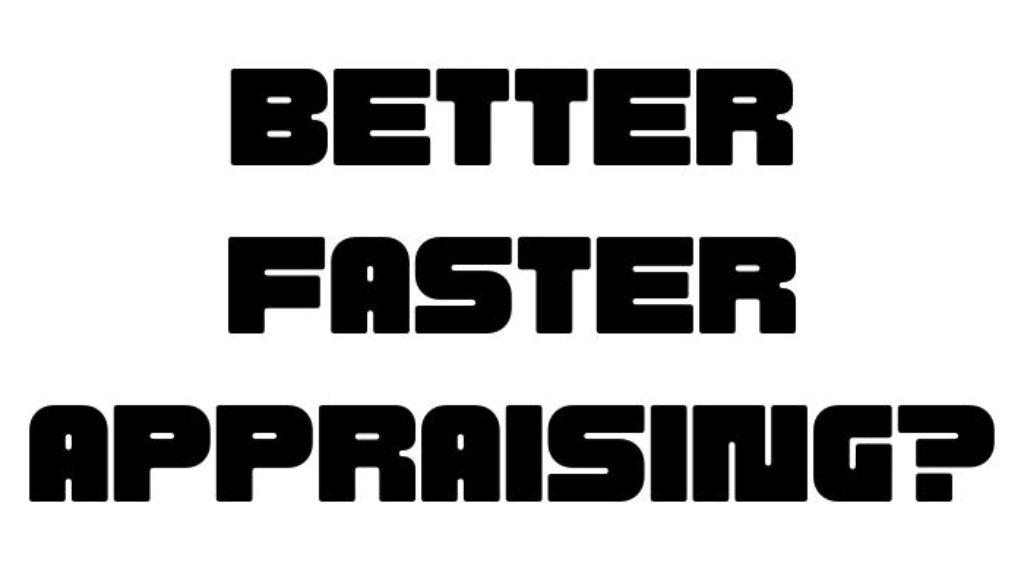Faster we understand! But what is “better”?
Faster is one of the ways we can make more money. Faster can be personally satisfying — if I can deliver a good or better product by being more efficient.
Efficiency comes through good systems, and personal competency. Aha! So better can involve better systems, and more knowledge. I have found that simply being more confident about my own judgment, really helps all of the above. I know that if challenged on an appraisal, I have an answer, or can respond helpfully, without getting angry or hurt.
If I feel overall ok about my competency, it is much easier to respond to requests, good or bad.
So, it appears the answer is to get competent and know things – and make sure my systems and analyses are responsible. It is also helpful if I can explain my analyses. Perhaps even help my reader and my client learn also! What a thought! Help others!
So how do we do ‘better’ and faster? What is ‘better’ in today’s world. What do clients want?
Is it possible that faster is a part of better? How can this be?
My judgment is an important part of the appraisal process. How can I improve my judgment?
My ability to work with my client is an important part also. How can I improve connection?
Finally, my delivery of facts, logic, similarity, and story – are a mix of hard results and human OK-ness. How do I deliver human approval alongside of hard results?
Modern technology can be a challenge. It can be a challenge for clients as well as for us. So how do we communicate our facts, logic, comparisons, and stories in a way that is scientific and has human appeal?

It turns out that humans, as a species, are very visual. We see things, we interpret what we see. We judge by shape, by color, by relationships, by texture, and movement. We have a high ability to interpret what we see. To generalize, to find patterns, to anticipate how things connect, and to identify when something does not fit.
Now we see that competence is important. We see that the ability to visualize and see patterns and outliers are important. So how do we enhance our competence with our ability to see things? The answer is computation. We take advantage of the computer’s ability to take what we see, to calculate and apply logic (an algorithm) – and put it on a screen for us to see, and apply our sharpened judgment to the problem.
In valuation we have two main analyses: First to identify the relevant data. Second, to place the subject property inside that similar data. The two analyses are quite different. But visuals, (graphs) help us on both counts. In particular histograms and scatterplots help our eyes see markets. Remember, our job is to analyze supply and demand in a market.
We do ‘better’ if we focus on measuring markets, instead of comparing comps! This is our competence.
In the past, “pick comps” and “make adjustments” was necessary. Today, we must identify the relevant data set. “All information necessary,” and “comparable sales data as are available,” per USPAP SR1-4.
Nowhere in USPAP do we find the words “pick the best four or five comparable sales.”
Nowhere do the 10 Standards of USPAP say “make adjustments.” Strange.

April 14, 2021 @ 5:16 am
The market sets prices. We identify contributory elements and apply them to the subject property.